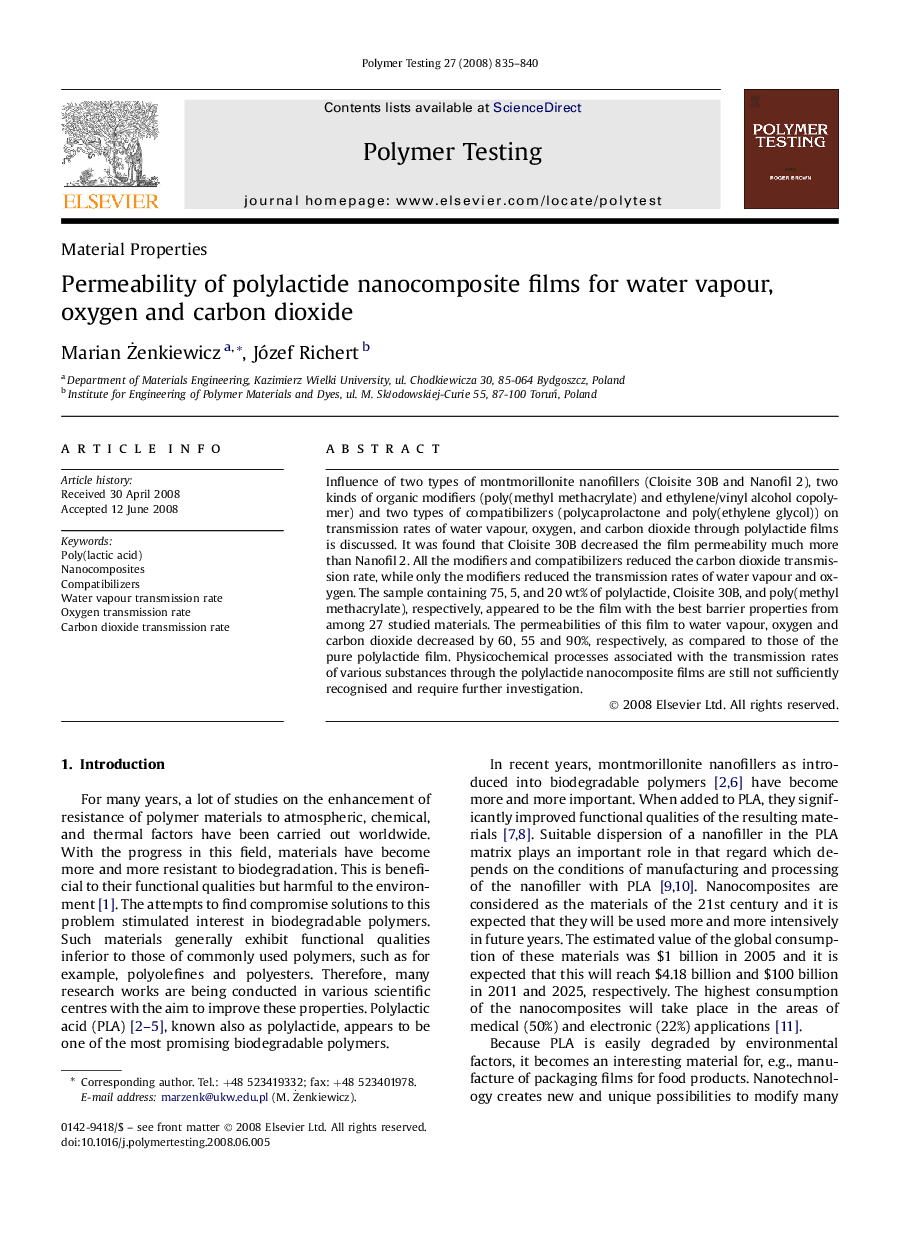| Article ID | Journal | Published Year | Pages | File Type |
|---|---|---|---|---|
| 5207273 | Polymer Testing | 2008 | 6 Pages |
Abstract
Influence of two types of montmorillonite nanofillers (Cloisite 30B and Nanofil 2), two kinds of organic modifiers (poly(methyl methacrylate) and ethylene/vinyl alcohol copolymer) and two types of compatibilizers (polycaprolactone and poly(ethylene glycol)) on transmission rates of water vapour, oxygen, and carbon dioxide through polylactide films is discussed. It was found that Cloisite 30B decreased the film permeability much more than Nanofil 2. All the modifiers and compatibilizers reduced the carbon dioxide transmission rate, while only the modifiers reduced the transmission rates of water vapour and oxygen. The sample containing 75, 5, and 20Â wt% of polylactide, Cloisite 30B, and poly(methyl methacrylate), respectively, appeared to be the film with the best barrier properties from among 27 studied materials. The permeabilities of this film to water vapour, oxygen and carbon dioxide decreased by 60, 55 and 90%, respectively, as compared to those of the pure polylactide film. Physicochemical processes associated with the transmission rates of various substances through the polylactide nanocomposite films are still not sufficiently recognised and require further investigation.
Keywords
Related Topics
Physical Sciences and Engineering
Chemistry
Organic Chemistry
Authors
Marian Å»enkiewicz, Józef Richert,
